SHIFTED #12: On Digital Art in a Post-Natural Era and World-Becoming
Now that the Art Basel and The Digital Art Mile week is over, I am back here with even more ideas to share! I realized some fundamental concepts I use in my articles were never really explained. Hopefully this new article will unveil some questions.
When artist Ana Aguirre and I started to work on the exhibition Echoes of Life—Memories of Fragile Ecosystems in the Fine Arts Institute in Cali (Colombia), we didn’t know it would lead us to the construction of a space where visitors could see and feel the posthuman and post-natural world we live in. At first, our goal was to connect different artists from various continents around common experiences of biodiversity loss and collective belonging.
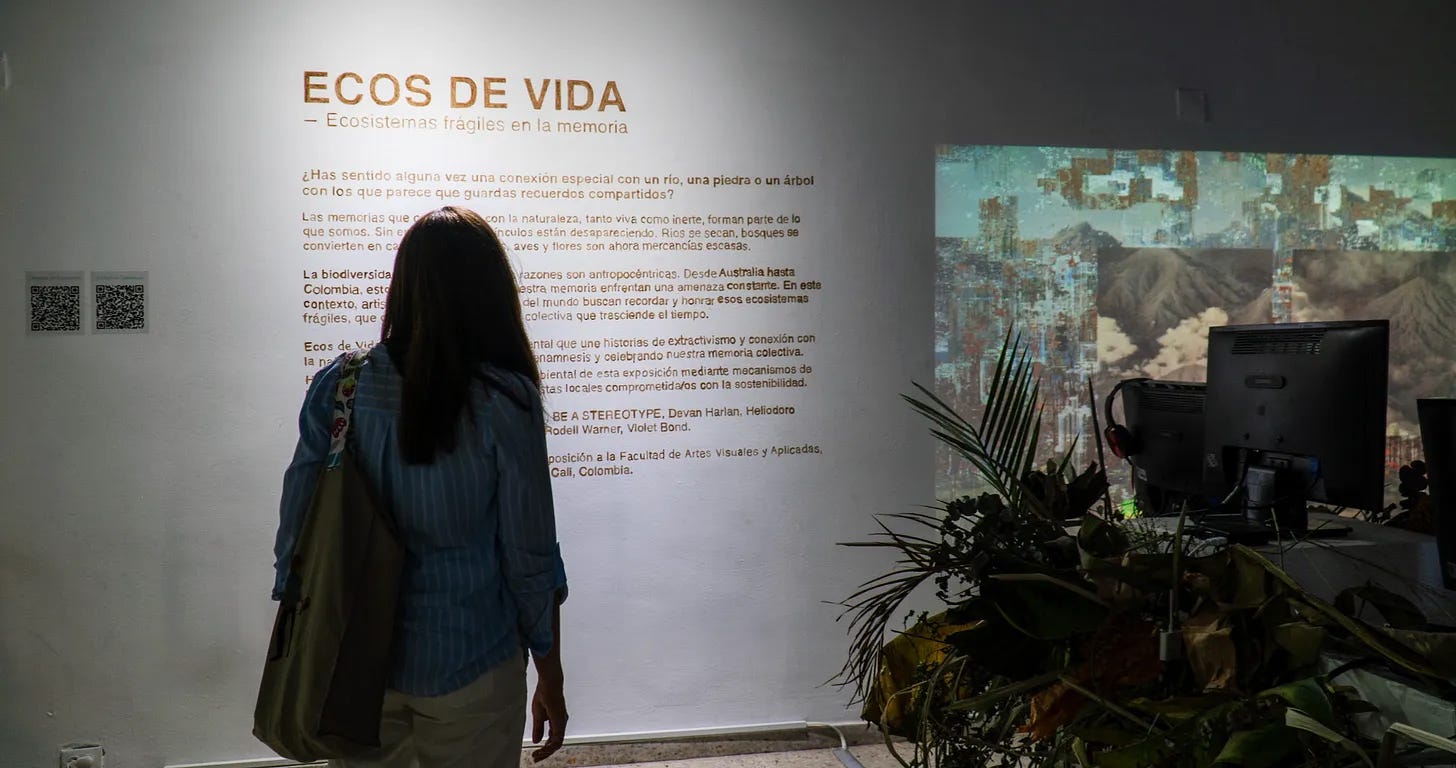
Imagine standing in the middle of the exhibition Echoes of Life in Cali, surrounded by sound recordings from birds from Colombia and the humming vintage computers, with the smell of sugarcane leaves, coffee grounds on the wall to write the title, discarded plants and flowers collected from a local flower shop, and organic fabrics decorated with plant-based inks. It pulsed with life—but not any kind of life: life that is under the threat of extinction due to extractivist practices. And, just like these species, the screens are subject to the same destiny. One visitor noted, “This exhibition repurposes elements that were discarded in a frantic rush to acquire the latest technology, rescuing screens that were on the path to their own extinction.”
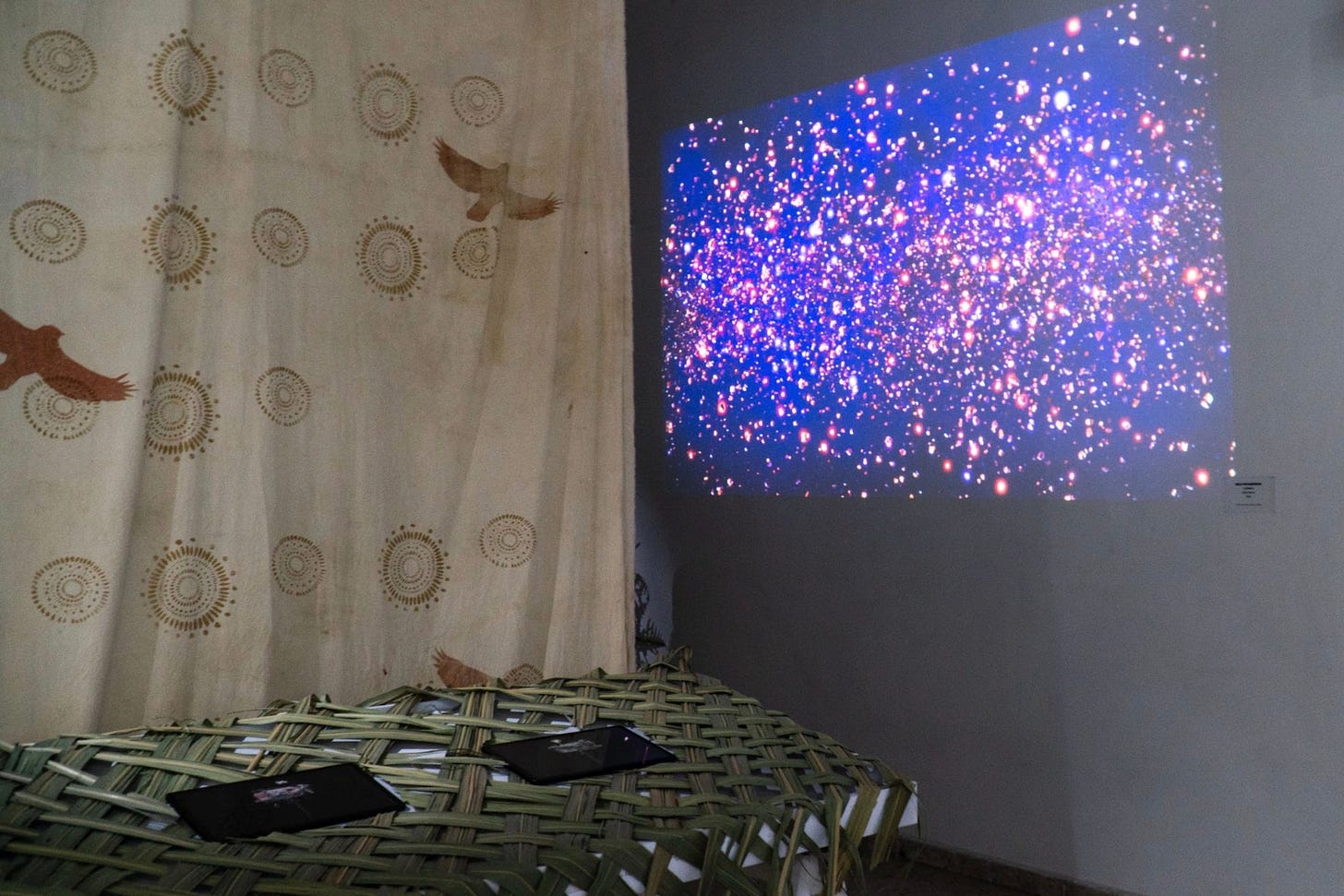
The exhibition Echoes of Life is conceived as a transcontinental dialogue between stories of extractivism and deep connection with biodiversity, going towards bio-anamnesia (the act of remembering extinct species or past interaction with the living) and celebrating our collective memory. The artworks presented highlighted relations of interdependence between species, living and nonliving entities, and ecosystems. Whether it is Ana Aguirre’s (Colombia) dreamlike birds, both fragile and sonically alive, or Helio Santos’ (Mexico) AI-sculpted mountains that vanish and return in sync with extraction rhythms, the works remind us that landscapes remember. From Kelly Richardson’s (Canada) crystalline tributes to extinct species to Juan Ramirez’s (Ecuador) composted symbiosis of machine and root, Rodell Warner’s (Trinidad) vibrant portals into human–environment relationships, or Alexandra Crouwers (Belgium) and BE A STEREOTYPE (Brazil), created digital ecosystems from industrial waste—where fungus and code, decay and memory, lived side by side. The exhibition pulses with a call to rethink permanence, loss, and entanglement.
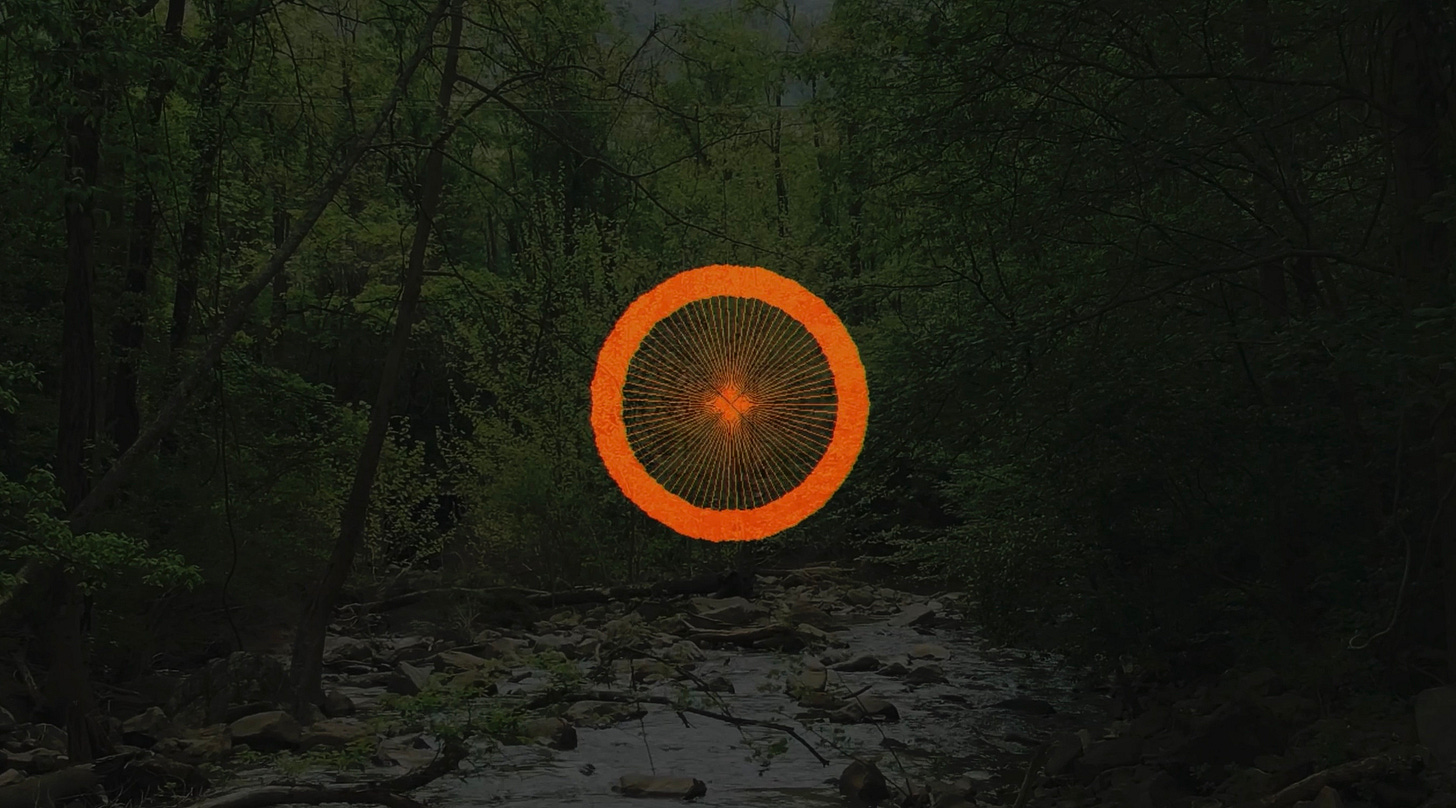
From Nature to Natureculture
People commonly view nature as an unchanging force that remains pure or sublime. According to French anthropologist Philippe Descola, the very concept of nature has been created by Western philosophy. The divisions between such categories as human beings and non-human entities, between living things and lifeless objects, and between natural elements and manufactured products emerged through colonial scientific practices and Enlightenment philosophical developments. Through his research, Descola invites us to unlearn them. He explains that the concept of nature does not exist in ancestral communities; there is no difference between human and non-human as long as every entity part of the living world has a soul (this is the very idea behind animism).
In many ways, posthuman and post-natural thinking are less futuristic than ancestral. Descola stated that all humans were animists at some point because they lived in worlds where trees had power, rivers remembered, and animals were considered family. Many Indigenous cosmologies maintain this perspective, which sees life as unconfined by biological boundaries and spirit as an active force that permeates all things. These beliefs represent actual methods of reciprocal interaction and attention rather than metaphors.
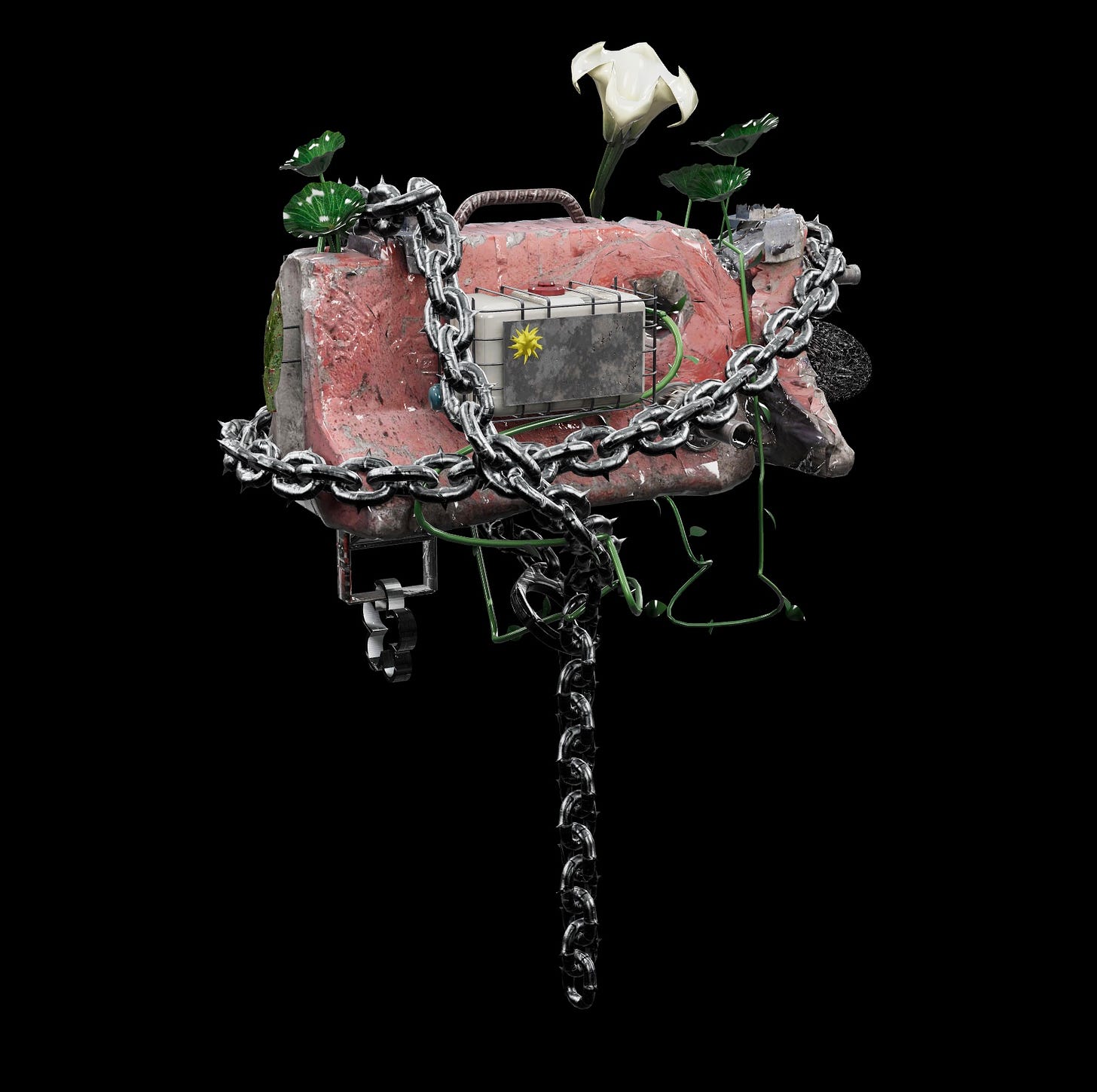
Donna Haraway extends this concept by introducing natureculture as a term to describe how nature and culture are never really separated. We do not live with nature; we are shaped by and embedded within it, just as it is shaped by us. The leaf, the algorithm, and the memory exist in a state of mutual creation.
Post-natural philosophy represents a recognition of nature's transformation rather than its sublimation or elimination. Recent archaeological findings using LIDAR technology discovered that the so-called Virgin Forest of the Amazon has been home to millions of people for more than thirteen thousand years (Eduardo Góes Neves, professor of archaeology at the University of São Paulo, Brazil). Today, modern landscapes exist through satellite mediation, while species evolve through genetic manipulation, and forests exist as data systems. The “natural” is no longer untouched. It is hybrid, coded, and always in evolution.
Following this new school of thought, digital artists choose to interact with the changes in the world through fabulation and speculation, embodying new techniques, perspectives, and practices to discuss the present and envision a future that is definitely posthuman.
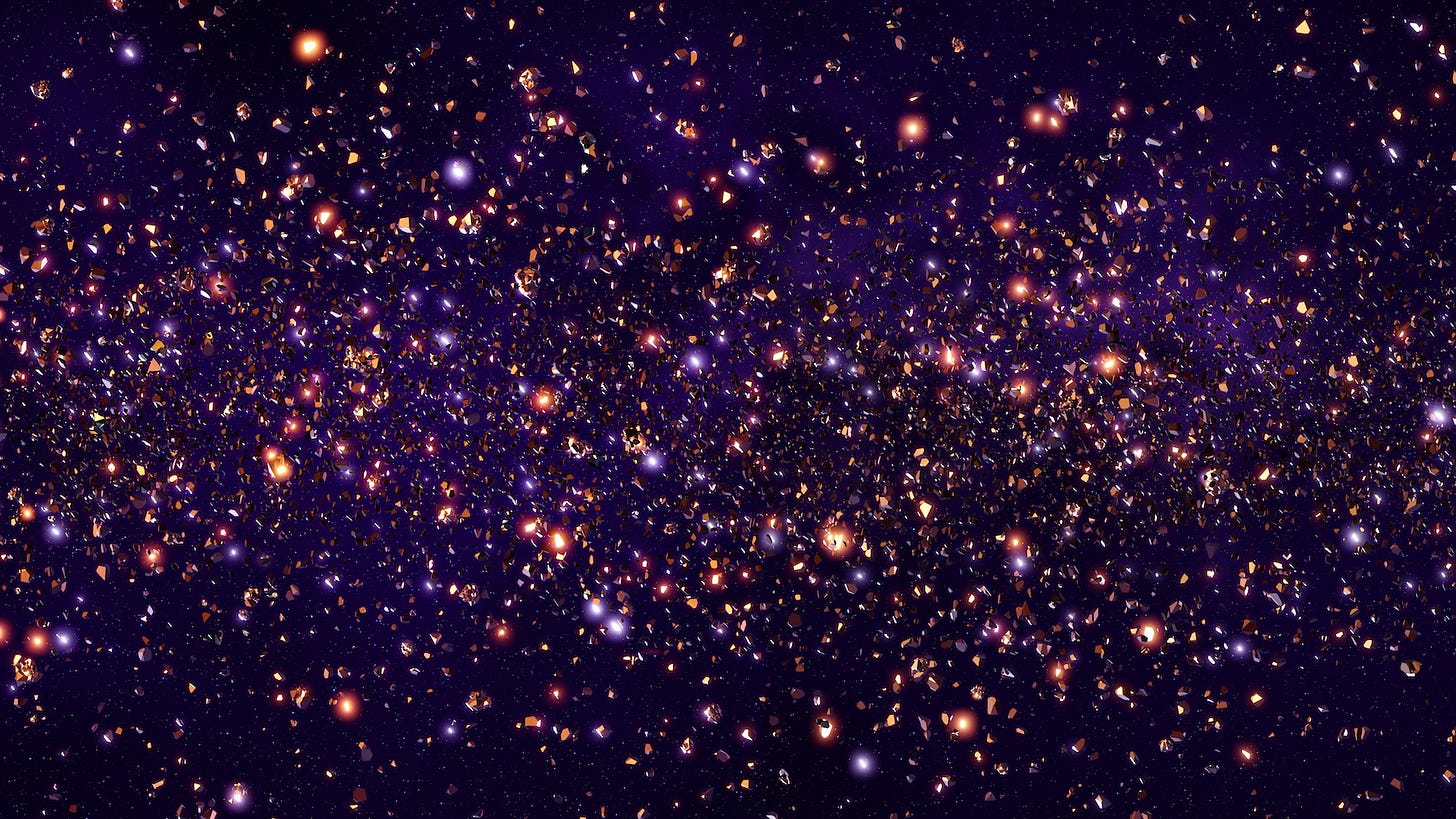
World-Becoming as Practice
Today, digital artists across continents use posthuman and post-natural approaches derived from local and ancestral knowledge, ecological grief, and technological speculation to tell their stories. These artworks are not here to create only utopian futures; they focus on exploring transitions and transformations of shape, species, and landscapes for living or nonliving entities, organic or synthetic.
World-building as a concept still implies control; let’s consider world-becoming as an alternative approach. A mode of art-making that is relational, contingent, and porous. A practice that acknowledges our deep connection to technological systems and natural ecosystems. Posthuman and post-natural digital art resists the straightforward acceleration of progress and celebrates the interconnection and entanglement of other intelligences, other lifeways, and other futures.
This article was originally published on the 100 Collectors website, a community of art collectors bridging the digital art space with the contemporary art world.



